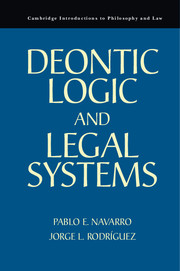6 - Legal Dynamics
Published online by Cambridge University Press: 05 October 2014
Summary
Momentary and Non-momentary Legal Systems
Raz made a fundamental step forward in the theoretical reconstruction of legal dynamics when he introduced the distinction between momentary and non-momentary legal systems. The former concept refers to all those norms that are valid at a particular time; the latter is a broader concept that refers to something like the legal history of a particular community. The distinction between momentary and non-momentary legal systems is designed to shed light on the interplay between the changing content of law and its continuity over time, because it helps us to understand the reason why a pair of norms which were valid at different times can be regarded as members of the same municipal law even if they never belonged to the same momentary system. Non-momentary legal systems – also called “legal systems” simpliciter by Raz – show how the legal history of a political community is mainly developed by means of the introduction and elimination of valid norms. In non-momentary legal systems, genetic relations play a fundamental role because they define normative hierarchies and conditions for exercising normative powers. For this reason, Raz stresses that in every legal system there are genetic relations between norms.
In the creation of norms, there is a genetic relation between a power-conferring norm and the new norms created by the exercise of such power. The relevance of such relations among norms seems to be obvious: unlike morality, law often changes by specific normative acts performed by legal authorities. In fact, a person (or organ) is a legal authority only to the extent that she is allowed to modify the deontic status of certain actions. Thus, authority and creation of norms are conceptually related, and any explanation of the nature of law would be defective if this characteristic of legal systems were not taken into consideration.
- Type
- Chapter
- Information
- Deontic Logic and Legal Systems , pp. 196 - 240Publisher: Cambridge University PressPrint publication year: 2014

